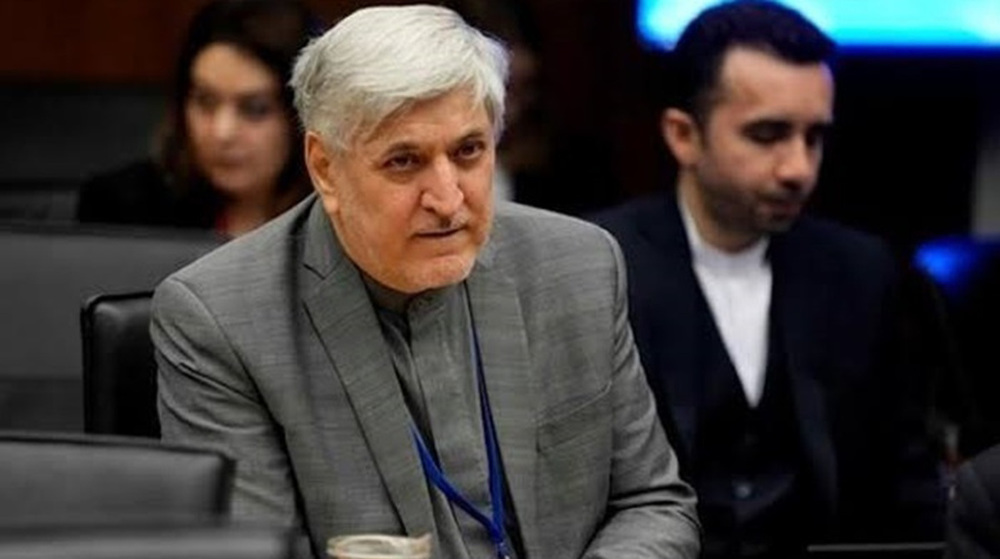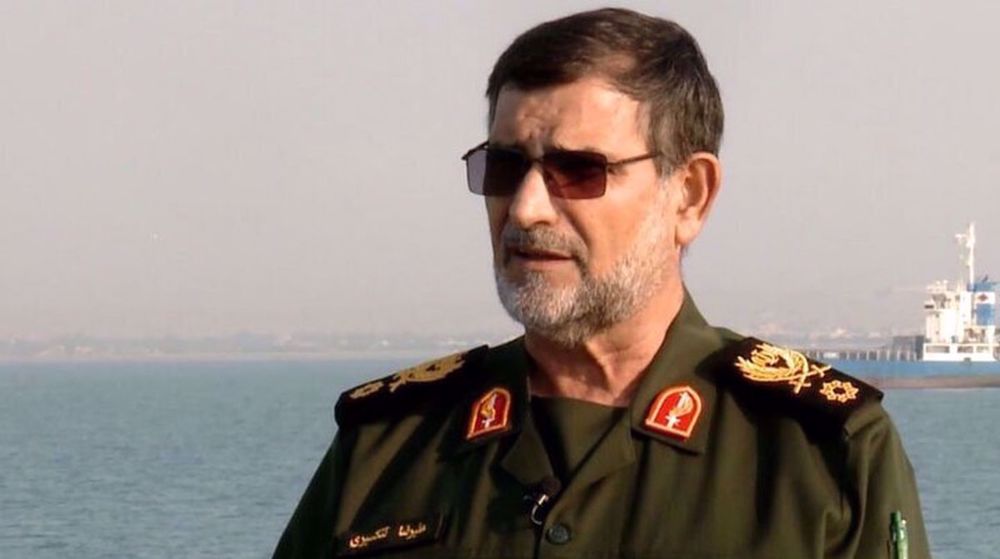Explainer: What is Persian Gulf Day and what are its origins and significance?
By Press TV Website Staff
Today, April 29, is observed as the Persian Gulf Day in the Islamic Republic Day, which coincides with the anniversary of the expulsion of the Portuguese Navy from the Strait of Hormuz in 1622 by the legendary Safavid dynasty ruler Shah Abbas I.
Persian Gulf is a strategic waterway, surrounded by eight regional countries, known as the world’s largest reservoir of oil and gas. Iran borders its northern shores and its territory also forms the northern side of the Strait of Hormuz, the world’s most important oil passageway.
One of the world’s most important waterways, it produces one-third of the world's oil, half of the world’s crude oil reserves as well as a significant amount of global natural gas reserves.
However, its importance is not confined to oil and gas alone. It has been a scene of political and economic tension between regional and extra-regional countries for years.
The United States, which has spent trillions of dollars to consolidate its military presence in the strategic waterway, has in recent years dispatched its hostile ships close to Iran's territorial waters, engaged in illegal oil smuggling in order to destabilize the waterway.
It has also been in the news for its name. Despite historians and international bodies collectively recognizing it as the 'Persian Gulf', some Arab countries and their Western allies have on several occasions attempted to hijack its name – referring to it as 'Arabian Gulf'.
Here is why the Persian Gulf name is eternal and an undeniable fact from ancient times.
— Highlights (@highlightsnews1) January 18, 2023
Follow Press TV on Telegram: https://t.co/7h1TYXZOQt pic.twitter.com/j74piItPNR
What is the Persian Gulf and where is it located?
The Persian Gulf, situated in southwest Asia and serving as an extension of the Indian Ocean, lies between the coastlines of southwestern Iran and the Arabian Peninsula.
The strategic water body got its name from the Achaemenid Persian Empire, also known as Persian Hakhamanishiya, around 330 B.C, according to historical accounts.
Sir Arnold Wilson, in his critically acclaimed book ‘The Persian Gulf’ published in 1928, stressed that no waterway has been as important to geologists, archaeologists, geographers, traders, politicians, tourists and academics as the Persian Gulf.
"Since at least 2200 years ago, this waterway, which divides the Iran Plateau from the Arabia Plate, has possessed an Iranian identity," Wilson wrote in the book.
The water body has also featured in colorful travelogues of Ibn Battuta, Pythagoras, King Darius and others from the bygone era, which attests to its importance as a strategic waterway.
The countries around it include Iran, Iraq, Kuwait, Saudi Arabia, Qatar, Bahrain, United Arab Emirates and Oman. Iran is located on one side while the Arab states are on the other side.
The deepest point of the waterway is located in the Strait of Hormuz, which sees more than 17 million barrels of oil pass through it every day, including most of the oil from OPEC countries.
The important Persian Gulf ports of Iran include Bandar Abbas, Bussher and Asaluyeh and the islands include Kish, Gheshm, Hormuz and Hengam — all of them major tourist attractions.
Why does the Persian Gulf matter?
The strategic waterway is significant for many reasons, including for its vast oil and gas reserves, which have given it the sobriquet of “world’s oil reservoir”. That’s a key reason Western powers, especially the US, have provocatively sought to expand their footprints in the waterway.
The Persian Gulf is home to two-thirds of the world’s total oil reserves and half of the world’s crude oil reserves. The volume of its natural resources is complemented by the size of oil fields
The water body is also a transit route for oil produced by regional countries including Iran, Iraq, Kuwait, the UAE and Saudi Arabia, with the Strait of Hormuz being the main route for it.
As per rough estimates, the Persian Gulf region contains more than 730 billion barrels of oil and over 70 trillion cubic meters of natural gas. Most of it is refined in the region itself with countries surrounding the water body setting up major petroleum refineries in recent years.
The strategic ports along the Persian Gulf shores include Bandar Abbas, Bushehr, Bandar Lengeh, Kish, Khorramshahr and Mahshahr (Iran), Sharjah, Dubai, Abu Dhabi (UAE), Basra, Al-Faw (Iraq).
The presence of the Strait of Hormuz, a 39-km strip situated between Iran and Oman that is the only passage for over one-sixth of global oil production, adds to its strategic significance.
What’s the right name – the Persian Gulf or Arabian Gulf?
Celebrated geographers such as Strabo (Greek) and Ptolemy (Roman) unequivocally referred to it as the Persian Gulf. It also appeared in world maps sketched by them.
Arab historians, explorers and geographers, including the 10th-century writer Agapius, also referred to the important water body as the Persian Gulf in their works.
Abdel Khaleq al-Janabi, a Saudi Arabian history scholar, says the name Persian Gulf has also been used for it by world-renowned historians including Ibn Khaldoun and Ibn al Athir.
There was unanimous agreement over the name of this strategic body of water until the 1960s when the emergence of pan-Arabism and Arab nationalism gave rise to the dispute.
Some Arab states, showing flagrant disregard for historical records and driven by misplaced geopolitical ambitions, started referring to it as the Arabian Gulf or al-Khaleej al-Arabi.
Some reports also pointed to British government agents such as Charles Belgrave and Roderick Oven, who first used the name ‘Arabian Gulf’ in their books before it gained currency in the Arab world.
The United Nations and other international organizations, however, stressed that the name of the strategic water body continues to be the Persian Gulf, not the Arabian Gulf.
In January last year, Iran took strong exception to Iraqi Premier Mohammad Shia Al-Sudani’s use of the forged name for the strategic waterway.
“The use of the name, Persian Gulf, for this body of water is a historical, eternal, documented and undeniable fact and repeating a false name does not change facts and brings no legitimacy to the false name,” foreign ministry spokesman Nasser Kanaani said at the time.
What are the origins of Persian Gulf Day?
On April 29 or 30, Iran marks the Persian Gulf Day, which marks the anniversary of celebrated Safavid ruler Shah Abbas I’s military campaign against the Portuguese Navy in 1622 when the foreign colonial forces were driven out of the Strait of Hormuz.
The day was instituted in 2005 by Iran’s High Council of Cultural Revolution and is marked every year with countrywide events, especially in the coastal provinces bordering the Persian Gulf.
The occasion, according to officials, is a means of reaffirming commitment to safeguarding the country’s sovereignty and territorial integrity, especially in the wake of continuing attempts by some Western powers and their regional allies to destabilize regional waters.
The commander of IRGC Navy Rear Admiral Alireza Tangsiri in his remarks on Monday said Iran’s strategy is to promote peace, security and fraternity in the Persian Gulf and the Strait of Hormuz.
Pointing to the importance of the strategic water body, Tangsiri said the deepest waters are on the coast of the Persian Gulf and the best waterways are located on the Iranian side.
The region is “very important” when it comes to security issues, he noted, emphasizing that Iran has repeatedly conveyed its message of peace and friendship to Persian Gulf countries.
“Those who come to this region from thousands of miles away do not seek [to boost] security,” the senior Iranian commander stated.
In 2010, Persian Gulf Day was registered as the country’s national heritage in a decision taken by the ministry of cultural heritage and tourism.
It was in response to the campaign launched by Arab states that year to rename the waterway as ‘Arabian Gulf’.

Iran dismisses UK accusation of threatening Britain’s national security

Iran’s IAEA envoy: West’s ‘ineffective’ pressure campaign to backfire

Iran court orders US to pay $12.6 billion to thalassemia patients
Syrian regime declares curfews in several regions
Sudan takes UAE to UN court over 'complicity in genocide'
Trump's threats will embolden Israel to ignore ceasefire: Hamas
Hamas ready for 'all possibilities' after 'last warning' by Trump
Iran elected vice president of OPCW panel despite US opposition
Lavrov: Macron 'preparing to use a nuclear weapon against Russia'
Iran FM in Saudi Arabia for OIC meeting on US depopulation of Gaza
VIDEO | US alliances crumbling under Trump, South Korea next?














 This makes it easy to access the Press TV website
This makes it easy to access the Press TV website